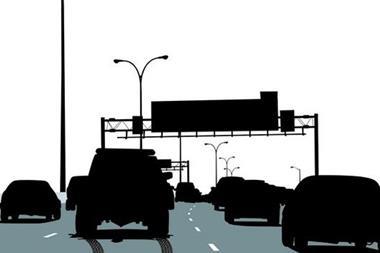Industry is giving telematics a second try, following gender pricing legislation
When Aviva introduced its flagship telematics programme in 2004, the industry was optimistic. The ability to price risk according to driver behaviour seemed like an ideal way for insurers to make money out of the soft motor market.
The programme involved Aviva fitting cars with boxes that monitored which roads drivers used and the time of day they drove. The idea was that underwriters would be able to assess and price risk more accurately using this information. It was also hoped that the potential for lower insurance premiums would encourage high-risk drivers to change their bad habits. But motorists and the car manufacturers proved slow to adopt the technology, and Aviva shelved its telematics programme in 2008.
Now, however, it is now looking to break back into telematics. And it is not alone. The AA, AXA, the Co-op and Swinton have all shown interest in rolling out their own systems.
An AA spokesman believes the recent European Court of Justice ruling on gender pricing had given motor insurers a wake-up call on the potential value of the system. He says: “Given the gender directive, we think telematics might finally start to get a bit more of a hold.”
New and improved
Much has changed since Aviva’s last foray into the market. The main difference is that telematics technology has become a great deal more advanced. A typical box can now record the location of a car at all times and log driver behaviour; acceleration; and driving, braking and cornering speed. It can then send the information to the insurer in real time.
Using this information, underwriters can judge risks more accurately. A driver that drives aggressively, brakes hard and accelerates too quickly, for instance, is more likely to have an accident, so their premiums would be adjusted accordingly.
If insurers provide the option, drivers could monitor how they drive online and see how this affects their premiums. This could help improve driver behaviour.
The high level of detail that insurers could obtain about accidents may also cut claims costs. For example, if two cars fitted with telematics systems had a crash, insurers would know instantly where it happened and how fast each car was going. This would help to cut the number of fraudulent whiplash claims, as insurers would know how fast the cars were travelling.
Telematics boxes are now also cheaper and easier to make and install, which makes the system more viable for insurers to roll out. Box manufacturer Octo’s head of UK sales, Andrea Natali, says: “The product has become cheaper and cheaper every year.”
Meanwhile, motor premiums have increased, improving the cost-effectiveness of telematics.
There’s an app for that
So what does the future of telematics look like? Accenture is developing a system that would serve insurers and also coach drivers. The system would link up to an app on a driver’s smartphone and give an audible warning when they break the speed limit or enter a high crash-risk area.
The system could also call the emergency services when it sensed a crash, which means medical and roadside assistance would be summoned to the scene even if both drivers were incapacitated or dead.
An additional benefit is that the driver could use the app to track their vehicle if it was stolen.
Accenture estimates that careful drivers could save an average of 30% on their premiums by using its telematics technology.
Telematics technology has clearly moved on since Aviva’s first attempt to break into the market. Interest from insurers and consumers is growing and a lot of earlier hurdles have been overcome. After a false dawn, many insurers believe that this time round, telematics is here to stay.
At a glance: why the Aviva pilot went wrong
- Aviva launched its pilot telematics scheme for 5,000 drivers
in 2004.
- It had an exclusive deal with US insurer Progressive to use
the telematics technology in the UK and Europe.
- Aviva group director for general insurance Patrick Snowball said in 2005 that he hoped the pay-as-you-drive telematics model would end annual motor insurance renewals.
- The insurer was also in talks with the Labour Party in 2005 to find ways of extending its high-profile telematics scheme to cover road tax for cars.
- Aviva scrapped the scheme in 2008 after deciding it was not cost effective.
- One reason was a slow uptake from customers. Sources said the eventual uptake was around 10,000, below Aviva's expectations.
- Another reason was that car manufacturers were slow to adopt the technology. Aviva hoped more car manufacturers would install telematics boxes as standard in cars, meaning the insurer could take advantage of existing systems and save money on installation.
Hosted by comedian and actor Tom Allen, 34 Gold, 23 Silver and 22 Bronze awards were handed out across an amazing 34 categories recognising brilliance and innovation right across the breadth of UK general insurance.














































No comments yet